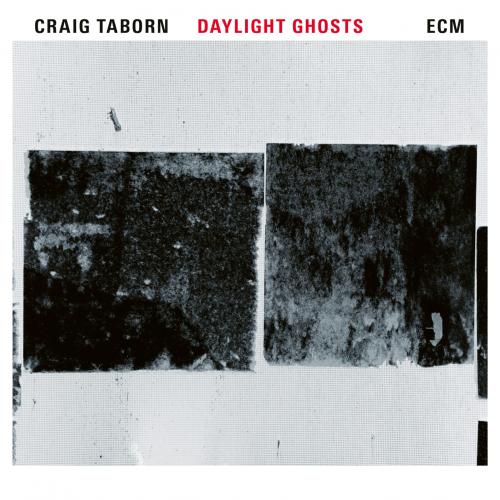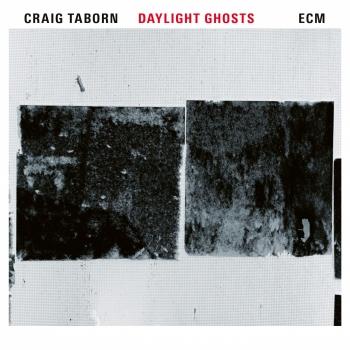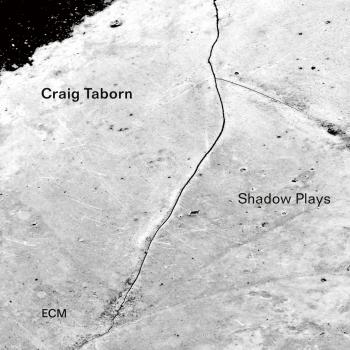
Daylight Ghosts Craig Taborn
Album info
Album-Release:
2017
HRA-Release:
03.02.2017
Album including Album cover Booklet (PDF)
I`m sorry!
Dear HIGHRESAUDIO Visitor,
due to territorial constraints and also different releases dates in each country you currently can`t purchase this album. We are updating our release dates twice a week. So, please feel free to check from time-to-time, if the album is available for your country.
We suggest, that you bookmark the album and use our Short List function.
Thank you for your understanding and patience.
Yours sincerely, HIGHRESAUDIO
- 1 The Shining One 03:34
- 2 Abandoned Reminder 07:46
- 3 Daylight Ghosts 07:36
- 4 New Glory 03:14
- 5 The Great Silence 05:37
- 6 Ancient 08:15
- 7 Jamaican Farewell 05:39
- 8 Subtle Living Equations 04:31
- 9 Phantom Ratio 08:28
Info for Daylight Ghosts
Keyboardist Craig Taborn’s Daylight Ghosts is the Minneapolis-bred New Yorker’s third ECM release as a leader, a quartet album following the solo Avenging Angel and trio disc Chants. Both projects earned wide acclaim, with The Guardian stating that Taborn’s “musicality and his attention to detail are hypnotic, as is his remarkable sense of compositional narrative within an improvised performance.” Along with Taborn on piano and electronic keyboards, the quartet of Daylight Ghosts includes two other luminaries from the New York scene – reed player Chris Speed and bassist Chris Lightcap – plus drummer Dave King, the leader’s fellow Minnesota native and one-third of The Bad Plus. Each player draws from a broad artistic background, as informed by rock, electronica and diverse strains of world music as they are the various permutations of jazz improvisation. Dynamism and spectral ambience, acoustic and electric sounds, groove and lingering
melody – all come together to animate Daylight Ghosts.
The sonic fluidity of Daylight Ghosts – its dynamic stressing group improvisation over discrete soloing/accompanying roles – is enabled by the long relationships that Taborn has forged with each of the other musicians, who gathered in New York City’s Avatar Studios with producer Manfred Eicher for the sessions. Taborn has been playing music with King since they were teenagers in Minneapolis, the two venturing everything from bebop and free jazz to dance music and metal. Taborn and Lightcap have shared membership in each other’s groups in New York for more than 15 years, while the keyboardist and Speed have been occasional musical confreres for a decade. Speed, King and Lightcap also have their own web of associations.
“Because the four of us have a history of commingling and playing a wide variety of music together, these guys were ideal for exploring a sound world of acoustic and electronic instruments in a seamless way, one that didn’t hit too hard on any obvious reference points,” Taborn explains. “Live, this band moves from a quiet, chamber-music space to a raucous, almost rock kind of energy, which Dave and Chris Lightcap really know how to drive. For the recording, I wanted to subtly infuse the chamber-like palette with some of that energy, yet with no hint of fusion. This music trades on transparency. I wanted all the elements to be crystalline, so that the layers of the music work like a prism.”
The lone cover tune on Daylight Ghosts reflects another of Taborn’s longtime affiliations. Beyond his recordings as a leader for ECM, Taborn has played on albums for the label by Michael Formanek, David Torn, Evan Parker and Ches Smith. But his first appearances on ECM were via a sequence of albums with AACM pioneer Roscoe Mitchell. Taborn and company reinterpret Mitchell’s “Jamaican Farewell” on Daylight Ghosts, with Speed taking up his dark-hued clarinet to find the melodic heart of this gem of ruminative lyricism. “I’ve always loved this piece, and it has such a beautiful, simple melody that elicits so much in the improvisation,” Taborn says. “And with the introduction of subtle electronics, it really seems to open up a vast world we can explore.”
The rest of Daylight Ghosts features eight Taborn originals, snaking and atmospheric by turns. Highlights include the tune-rich title track, marked by Speed’s Spartan-toned tenor and Taborn’s entrancing piano figures, as well as “Phantom Ratio,” which has Speed’s sax tracing long tones over Taborn’s pealing synth loop and keening electronic buzz. “The Great Silence” and “Subtle Living Equations” have a hovering, almost ambient feel. Opening with a guimbre-like Lightcap solo, “Ancient” pulses on a long crescendo of rhythm, while “The Shining One” moves from the get-go, colored by Taborn’s high-energy piano improvisations and King’s skittering percussion.
Reflecting on what his cohorts bring to this music, Taborn says: “Dave has a refined sonic sensibility at the drum kit, particularly in the way he integrates acoustic and electronic percussion. It’s about not having either one dominate; so that when you hear the record, it’s not always apparent what’s an acoustic drum and what’s an electronic drum pad. Chris Lightcap has a concept for both the double bass and the bass guitar that’s invested in vintage sound quality. He likes flat, roundwound strings on the Fender Precision bass; he likes a dark amp tone; and he likes laying down strong, solid bass lines. We share an affinity for these vintage instrumental sounds while finding new ways of utilizing those sounds expressively.”
Chris Speed “has an astounding skill set for dealing with complicated music, but his approach is one of patience and consideration. He will always take the direct path, which is so important in music that emphasizes an integrated group sound. It can be a particular challenge with the tenor sax, which is so often a lead instrument. But his playing can both hold its own space and not overwhelm the texture. In that, he reminds me of John Gilmore, who when playing with Sun Ra could state a strong idea simply and then tuck back into the band. And on clarinet, Chris has just a gorgeous sound. It’s important for this band to have both the earthy tone of the tenor and the more lyrical sound of the clarinet. Chris brings both.”
Taborn’s ever-involving pianism blends darting leaps with finely graded colorations and hypnotic minimalism. Beyond his virtuosity, he employs multiple keyboards with a compositional aesthetic, the mix of acoustic and electric timbres heightening each other and filling the spectrum with interest. He stresses his fascination with “sonics” in the making of Daylight Ghosts. The album’s electric keyboard sounds subtly reflect his love of the lo-fi mystery heard in transistor organs from ’60s Sun Ra to early Philip Glass, from psychedelic rock to ’60s-’70s music from Ethiopia and Benin. Then there were such subtle, serendipitous passing events as King striking an electric gong with a reverse-attack, white-noise effect, which was highlighted in the mixing process as a telling “micro-detail” within the transparent sound picture.
“I really am a sound guy,” Taborn says. “After all, what’s music but a collection of sounds arranged in some evolving narrative. I tend to listen to things loud and with a certain focus so that I can hear as much detail inside of the sound as possible, not just the event or gesture – like here’s a drum fill – but the actual sound of the toms, how long a cymbal rings, the harmonic that arises when the cymbal is hit and that’s picked up by the piano. I live for the details, and there’s a lot of detail on this record. Don’t put it on in the background.”
Craig Taborn, piano, electronics
Chris Speed, tenor saxophone, clarinet
Chris Lightcap, bass
Dave King, drums
No biography found.
Booklet for Daylight Ghosts











